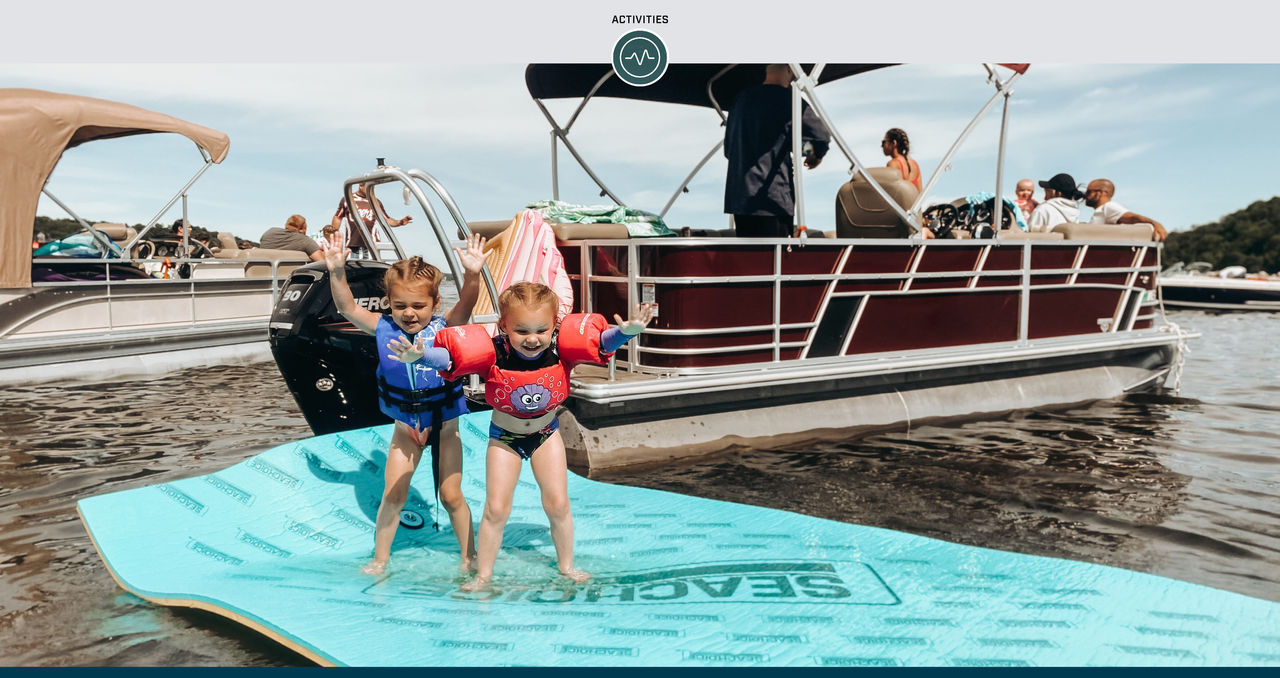For many boaters, the local sandbar – a mound or ridge of sand that is built up in a lake, river or in coastal waters by the action of currents, wind and waves – is a popular place to drop the hook and get together with other boaters. On weekends, sandbars usually are packed with families picnicking, swimming and snorkeling in the shallow water. A lot of boaters bring along a floating mat so the kids can have fun playing on it. Kayaking and paddleboarding are other popular pastimes.
If you are planning to anchor out for the day at a sandbar, here are seven tips to follow.
- Some sandbars are always covered by water, while others in coastal areas appear and disappear with the tides. If you plan to visit a tidal sandbar, be sure to bring along the local tide tables so you will know how much the depth of the water changes throughout the day.
“The bigger your boat, the deeper its draft. Watch the tide tables to be aware how much water is under your boat at all times,” said Capt. Scott Savo, Freedom Boat Club® training manager for southeast Florida, which is home to many sandbars.
- As you get close to the sandbar, post a lookout in the bow to watch for people and pets in the water. Be sure to approach slowly so you will have time to react and change course if the lookout spots a swimmer or snorkeled.
- Sandbars tend to get crowded during the day, so we recommend going early to get a good spot. Be sure to leave ample room between your boat and the boats on either side, to be a good neighbor and to reduce the possibility your anchor line(s) will cross the other boats’ lines, making it difficult to pull up the hook at the end of the day.
- Approach your anchoring spot with your bow into the wind. Again, be aware of people and pets nearby. “Lower your anchor, don’t throw your anchor,” Savo said.
- If the sandbar is exposed and you are making a beach landing, use both a bow and stern anchor to secure the boat. If the sandbar is under water, be sure to leave enough scope in your anchor line to allow for the boat to swing with the wind and current. If the sandbar is in a tidal area, take the change in water depth during the course of the day into account when you calculate the scope.
Capt. Savo provided the guidelines below for calculating the scope or your anchor rode. If you don’t have the lengths marked on your anchor line, you can use your “wingspan” as a ruler. Your outstretched arms are usually close in length to your height.
No wind to light wind: Use a ratio of 5 to 1 (5 feet of line for every 1 foot of water depth)
Light to moderate wind: 7 to 1
Heavy wind or storm: 10 to 1
“Don’t forget to add freeboard (the distance from the anchor chock or cleat on the bow of your boat to the surface of the water) to your depth calculations,” Savo added. “Adding extra line never hurts, while not adding enough could lead to disaster. Finally, in moderate to heavy winds, never use a stern anchor.”
- While the sandbar crowd is usually friendly, people tend to complain when other boaters play music too loudly over their vessel’s stereo system. Today, many boats are equipped with megawatt speakers and amps that rival a home entertainment system. While most sandbars are self-policing, some communities have sound ordinances that restrict loud music, particularly at night. Find out what the rules are in advance and please treat your neighbors on the sandbar with respect.
- Sun, sand and sparkling water make local sandbars a boater’s paradise. But it’s important to remember that spending the day in an exposed location like this can lead to sunburn if you are not careful. These four sun safety tips can help to “save your skin.”
Sandbars combine the fun of boating with the adventure of being on a “desert island” and the bliss of basking on the beach. If you keep these tips in mind the next time you anchor out at a sandbar, you will stay safe and make memories to last a lifetime.
All trademarks are the property of their respective owners.



